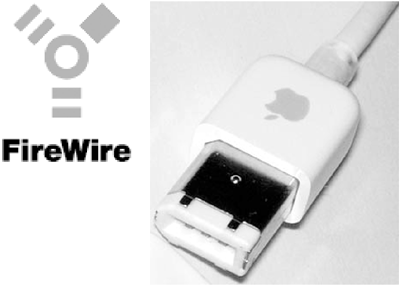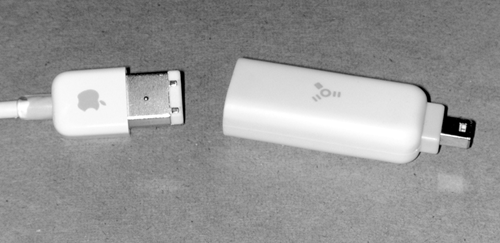2.1 FireWire
| < Day Day Up > |
| Apart from boosting magazine sales, there's never been much value in sitting in front of the computer, waiting for large files to copy onto external drives and other add-ons. In the eternal search for faster data-transfer speeds, Apple developed a new high-speed cable called FireWire in the mid-1990s. It's easy to use, it's hot-swappable (you don't have to turn off anything before plugging or unplugging the cable), and ”unlike SCSI cables, which came before it ”it doesn't force you to go through configuration acrobatics to get multiple devices to all work properly. Dozens of other companies, including Windows PC makers , eventually picked up FireWire. Some gave it other names along the way: IEEE 1394 (its official moniker from the Institute of Electrical and Electronics Engineers, an industry standards group ) and i.LINK, used primarily by Sony. But whatever the name , it's still the same speedy connection underneath. With its ability to move 400 megabits of data per second, FireWire was quickly adopted by a product that needs to get an enormous amount of information from Point A to Point B: the digital camcorder. Other hardware with a need for speed, like external CD burners and hard drives, followed the path to FireWire connectivity. FireWire's speed makes possible one of the iPod's best tricks: slurping in an entire CD's worth of music from your computer in ten seconds. It's also how the iPod gets its battery charge. That's great if you have a Macintosh, because every Macintosh made since about 1998 has a FireWire connector built right in (see Figure 2-1). Figure 2-1. Left: The FireWire icon on cables and ports signals that the computer is equipped with the high-speed standard. Right: The connectors are wider and less rectangular than those of a USB cable. If you're a Windows PC fan, however, FireWire isn't such a sure thing. If you bought an iPod and then found out to your horror that your computer doesn't have a FireWire port, you have two alternatives. First, you can add a FireWire card to your computer, as described later in this chapter. Second, if you have a 2003 (or later) iPod model, you can connect your iPod via a USB cable ”a far more common PC connector. See Section 2.3 for details. 2.1.1 Connecting Your iPod by FireWireIf you have a Mac, connecting the iPod is simple: Just plug in the FireWire cable. If you have a PC, things are slightly more complicated, because there are so many different kinds of connectors your PC might have. For example:
NOTE Don't forget to connect the AC adapter. You can't charge an iPod from a 4-pin connector. |
| < Day Day Up > |
EAN: 2147483647
Pages: 171
